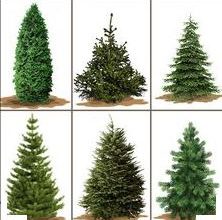Carnivorous Plants: [Complete Guide + How to Plant Them + Images]
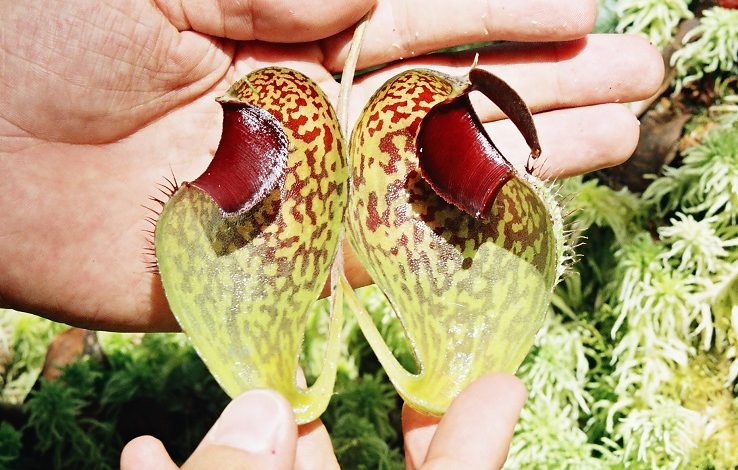
The flora on our planet can be beautiful, delicious, sometimes poisonous. and even predatory!
Such is the case of the famous carnivorous plants. But what is special about them? Why in recent years there are more and more fans to acquire this type of plants?
Well, let’s go by parts.
Despite being a more or less recent fashion, the truth is that carnivorous plants have existed on Earth for more than 35 million years.
And although most only feed on insects, there are some that can feed on larger prey; such is the case of the Nepenthes plant, a carnivore capable of feeding on rodents, batrachians and some lagomorphs.
Did you know…Did you know that carnivorous plants are excellent mosquito predators? Therefore they are ideal anti-mosquito plants.
What are carnivorous plants?
Carnivorous plants are plants that feed on insects, protozoa, crustaceans, arachnids and other larger vertebrate animals: lizards, lagomorphs, rodents, etc.
They are plants that generally grow in poor substrates, such as the acid soils of swamps and certain cliffs.
Now, not all plants that trap or kill animals are considered carnivorous.
Some plant species capture insects in their flowers to facilitate pollination. If theprey die during the process, the plant does not get any benefit from it.
Also, carnivorous plants never use their flowers as traps.
That is why, to distinguish carnivorous plants from others, we must consider…
Carnivorous plants have three main characteristics:
- They capture and kill their prey.
- They have a mechanism that facilitates the digestion of their prey.
- They derive a significant benefit from the nutrients assimilated from the prey.
It is important to point out that, in some cases, it is difficult to determine if they are true carnivores or if they are only plants with predatory attributes.
For example, until recently it was thought that the plant known as Devil’s Claw (Proboscidea louisianica) of the Martyniaceae family was carnivorous, since it has sticky glands that trap all kinds of insects and whose enzymes allow their digestion.
However, the nutrition they obtain from these prey is so insignificant that it has been ruled out that it is a carnivore.
Rather, the sticky leaves and enzymes are thought to function more as a defense against would-be predators. Hence, this type of plant is only considered as killer plants.
How they feed?
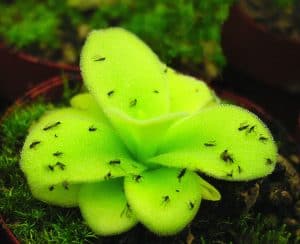 Carnivorous plants feed using their specialized leaves as traps.
Carnivorous plants feed using their specialized leaves as traps.
Thesethey use different tricksto attract prey: bright colours, extra floral nectaries, guide hairs or leaf extensions.
Once the prey has been caught and killed, it is digested by the plant or one of its organs. Once this is done, it absorbs the necessary nutrients from the carcass.
Needless to say, although most carnivorous plants grow without consuming prey, their growth and reproduction is much faster and more effective when they consume the nutrients derived from their victims.
How do carnivorous plants digest food?
- Once the prey has been captured, the carnivorous plants begin to secrete certain enzymes that slowly digest the animal.
- This occurs because the inside of the traps is lined with red glands that act like a stomach.
- In attempting to escape, the prey inevitably touches some of the multiple sensory hairs housed within the trap. These hairs trigger an electrical signal that spreads in waves through the trap.
- From the third signal, the glands secrete hormones and other substances such as hydrochloric acid, which help break down the prey.
- After the fifth signal, the plant’s digestive glands are activated, secreting a digestive enzyme that coats the inside of the trap and aids in the absorption of necessary nutrients, which are released through the decomposition process.
- In certain varieties, however, the process can be a bit more complex. Plants that have vase – type traps, for example, house a combination of rainwater with other organisms in their traps, forming a processing chain that contributes in its entirety to the digestion of the prey.
- Other carnivorous plants, such as the Byblis, use other insects to digest their prey, obtaining their nutrients from the droppings of these predators, either through their leaves or on the ground.
What types of carnivorous plants are there?
According to their Order, carnivorous plants are classified as follows:
caryophyllal
- Aldrovanda.
- Dionaea.
- Drosera.
- Drosophyllum.
- Nepenthes.
- Triphyophyllum.
Ericales
- Darlingtonia.
- Heliamphora.
- Roridula.
- Saracenia.
lamiales
- Byblis.
- Genlisea.
- Philcoxia.
- Pinguicula.
- Utricularia.
Oxalidals
- Cephalotus.
poales
- Brocchini.
- Catopsis.
Depending on the capture mechanism they employ, we find:
carnivorous pincer plants
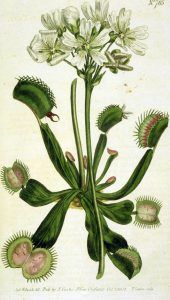 Currently, only two types of plants with this mechanism are known: Dionaea muscipula or Venus flytrap and Aldrovanda vesiculosa.
Currently, only two types of plants with this mechanism are known: Dionaea muscipula or Venus flytrap and Aldrovanda vesiculosa.
Both use a nectar that attracts flies, which perch on the leaves.
In doing so, if its legs activate the detector cilia on one or more occasions within less than five seconds, the trap closes automatically.
The spines on the edges of the leaves prevent flies from escaping. Trying to escape, the fly moves inside the trap, thus activating the secretion of enzymes and gastric juices.
Once the insect has been digested, the leaf detaches from its original stem to give rise to a new leaf and this process can be repeated over and over again.
sticky hair plants
It is the mechanism used by certain carnivores such as Drosera, Byblis, Drosophyllum and Pinguicula, among others.
Each species employs different methods to attract prey. Drosera, for example, secretes a viscous fluid with an aroma similar to honey, while Drosophyllum uses bright colors.
When an insect lands on the leaf, it becomes trapped in the hairs covered in sticky mucilage. Inevitably, the insect will die tired. This is when, depending on the species, the digestive process begins.
Plants with drop or vase type traps
Among these we find the Heliamphora, Nepenthes, Sarracenia, Cephalotus, Darlingtonia and Brocchinia reducta.
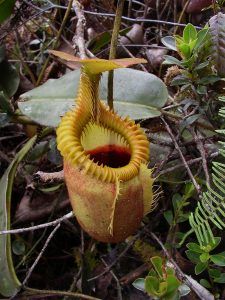 As the name implies,its trap is vase-shaped or cone-shaped.The edges of the trap emit odors that attract insects.
As the name implies,its trap is vase-shaped or cone-shaped.The edges of the trap emit odors that attract insects.
Landing on the edge, the insects slip and fall to the bottom of the trap, where a viscous liquid accumulates, preventing them from escaping and eventually suffocating them.
Plants with mechanical traps
This mechanism is found only in those plants of the genus Utricularia.
These are aquatic plants, whose mechanism is the fastest and most effective of all carnivorous plants, even surpassing that of the Venus flytrap.
In fact, they are considered amongthe most complex structures of the plant kingdom.
They have long stems with stolons that end in photosynthetic leaves and bladder-shaped traps. These bladders have a set of fine hairs that function as a spring.
When some prey, such as tiny crustaceans, approach the opening of the bladder and touch the hairs, the bladder rapidly expands absorbing everything in front of it in less than a millisecond.
The opening closes completely and after half an hour it is ready to suck in more victims.
Plants with lobster-pot traps
It is the exclusive mechanism of the Genlisea genus, which specializes in hunting protozoa, which they attract chemically.
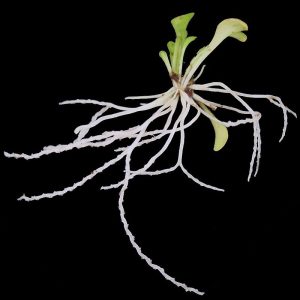 They have a leafY-shape that allows prey to enter, but not exit.
They have a leafY-shape that allows prey to enter, but not exit.
The internal hairs force the prey to advance in only one direction: towards a stomach located in the upper arm of the Y, where the digestion process occurs.
Needless to say, there are some types of carnivorous plants that use a combination of traps.
Such is the case of Drosera glanduligera, which combines characteristics of claw traps and those with sticky hairs.
Some of the interesting carnivorous plants
nepenthes rajah
Considered as the largest carnivorous plant that exists.Its trap is of the vase type, and it can drown some small mammals.
sundew derbyensis
It looks similar to that of a sea anemone. Like other Droseras, its leaves are covered with sticky hairs that capture insects.
Berteronian catopsis
Very similar to a succulent, this carnivorous plant feeds on nitrogen and phosphorous, which it absorbs from its prey.
It has a tank-like trap, which it coats with a sticky white powder that reflects light and tricks insects into flying in.
Most recommended carnivorous plants for beginners
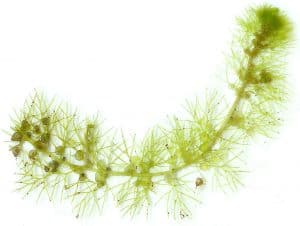 If you are new to the world of carnivorous plants, and are interested in growing them, you can start with any of the following species:
If you are new to the world of carnivorous plants, and are interested in growing them, you can start with any of the following species:
- Drosera capensis: Originally from South Africa, it is one of the most beautiful and most entertaining carnivorous plants with sticky hairs. In addition, it is one of the most resistant and adaptable.
- Dionaea muscipula: The Venus flytrap is one of the most popular carnivorous plants. It requires more care than Drosera, but it is a relatively simple plant to grow.
- Sarracenia purpurea: Known as purple pitcher plant. It is a very resistant plant and requires little care. Ideal to place on the windowsill.
How to grow carnivorous plants?
Although different species of carnivores have different needs for light, water and substrate, these three recommended species have very similar growing requirements:
These are some requirements to plant carnivorous plants:
- Light: All three love direct sun. We must see to it that they receive as much light as possible.
- Water: Fill your pots with 1 to 2 cm of distilled water or rainwater, preferably moistening the soil instead of watering it. Being bog plants, it’s best if the soil stays moist throughout the growing season.
- Substrate: Potting soil should not be used. A good growing medium consists of a mixture of finely ground bark, lime-free horticultural sand, and perlite, in a 2:1:1 ratio. Another peat -based mixture is sphagnum peat mixed with lime-free horticultural sand or perlite, in a ratio of about 2:1.
- Fertilizers: Never add fertilizer.
- Pots: Plastic pots work best, but ceramic pots work just as well, as long as they have plenty of drainage holes. 12cm pots are big enough formature plants.
- Transplantation: Preferably, during the spring.
- Dormancy: The Venus flytrap and almost all vase plants require a cold winter dormancy between November and February. In contrast, sundew can grow throughout the year. To provide dormancy for houseplants, move them to a cooler location. The plant’s leaves will turn black and die, only to start growing again in spring.
Food and other care
It may sound boring, but your carnivorous plant will be much healthier with aproper watering, plenty of sunlight, and good care during their winter dormancy, than with the food you place in their traps.
However, feeding carnivorous plants is fun, and even the healthiest plant will slow its growth if it doesn’t catch any prey.
If your plant lives outdoors or you regularly place it outside on sunny days, you don’t need to worry. She will take care of herself to obtain the necessary food.
If, on the other hand, you have it inside, there are some considerations that you will have to take into account:
- Feed your plant only insects.
- Don’t fertilize them. Remember that most carnivorous plants prefer to grow in nutrient-poor soil.
- One prey per week is more than enough.
- Do not activate the trap if you are not feeding them. Closing a trap requires a lot of energy.
- Do not feed your plant anything larger than 1/3 the size of the trap, as the trap must be completely sealed in order to digest it. Prey that is too large can rot the trap, causing it to turn black.
- Digestion only occurs if the trigger hairs on the trap are stimulated after the trap has closed. So if you are using dead bugs, use toothpicks or some other device to gently tickle the hairs which will allow the digestion process to begin.
See also:

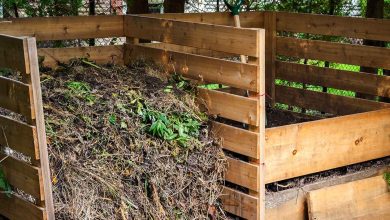
![Photo of Peat: [Characteristics, Utility, Obtaining and Application]](https://www.complete-gardening.com/wp-content/uploads/2022/08/peat-characteristics-utility-obtaining-and-application-390x220.png)

